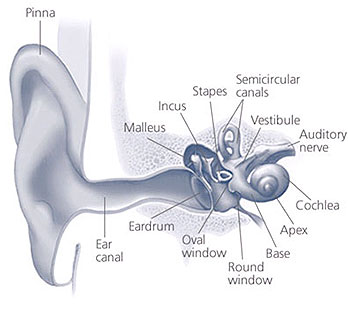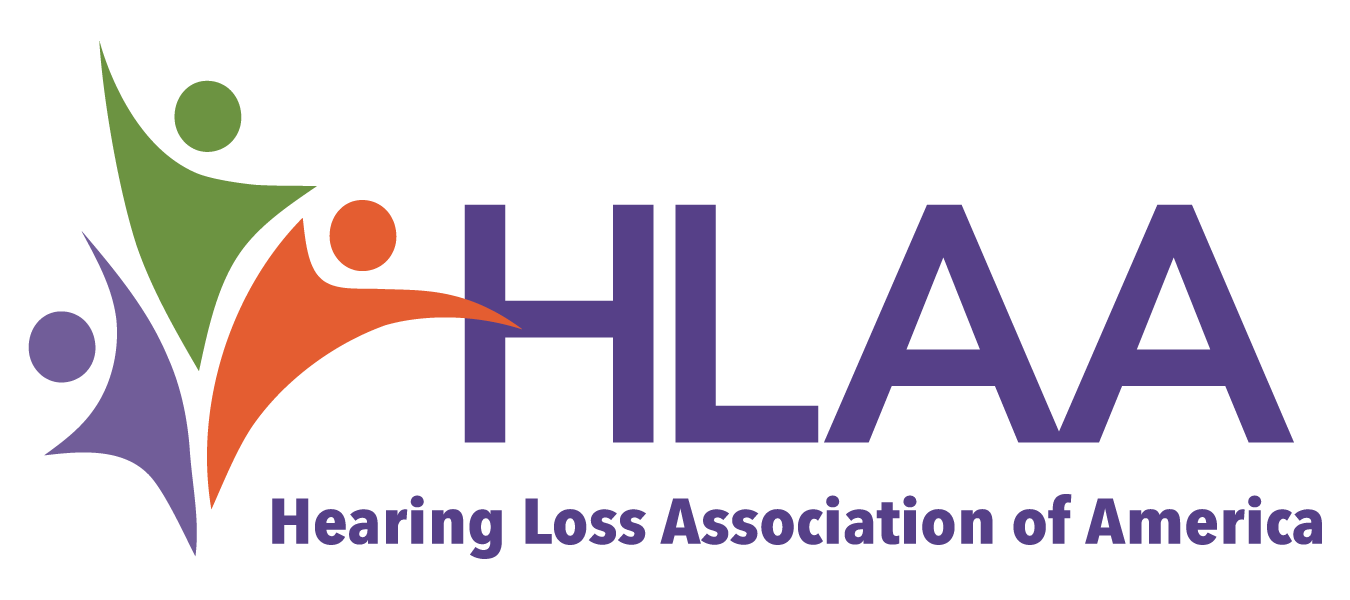How Can I Tell If I Have a Hearing Loss?
Ask yourself the following questions. If you answer “yes” to three or more of these questions, you could have a hearing loss and might need to have your hearing checked.
- Do you sometimes feel embarrassed when you meet new people because you struggle to hear?
- Do you feel frustrated when talking to people because you have difficulty hearing them?
- Do you have difficulty hearing or understanding co-workers, clients, or customers?
- Do you feel restricted or limited when you have a problem hearing?
- Do you often think, “I can hear but I don’t understand what is being said?”
- Do you have trouble understanding the dialogue on internet videos, movies, or in the theater?
- Does a communication issue due to poor hearing cause you to argue with family members?
- Do you ask people to repeat what they say?
- Do you think others mumble?
- Do you have difficulty hearing on the phone?
- Do you have trouble hearing the TV or radio and turn up the volume that is too loud for others?
- Do you feel your personal or social life is limited?
- Do you have trouble hearing your dining companions when you are together in a restaurant?
Adapted from: Newman, C.W., Weinstein, B.E., Jacobson, G.P., & Hug, G.A. (1990). The Hearing Handicap Inventory for Adults [HHIA]: Psychometric adequacy and audiometric correlates. Ear Hear, 11, 430-433.
How do we hear?

(Source: NIH/NIDCD)
Hearing depends on a series of events that change sound waves in the air into electrical signals. Your auditory nerve then carries these signals to your brain through a complex series of steps.
- Sound waves enter the outer ear and travel through a narrow passageway called the ear canal, which leads to the eardrum.
- The eardrum vibrates from the incoming sound waves and sends these vibrations to three tiny bones in the middle ear. These bones are called the malleus, incus, and stapes.
- The bones in the middle ear couple the sound vibrations from the air to fluid vibrations in the cochlea of the inner ear, which is shaped like a snail and filled with fluid. An elastic partition runs from the beginning to the end of the cochlea, splitting it into an upper and lower part. This partition is called the basilar membrane because it serves as the base, or ground floor, on which key hearing structures sit.
- Once the vibrations cause the fluid inside the cochlea to ripple, a traveling wave forms along the basilar membrane. Hair cells-sensory cells sitting on top of the basilar membrane-ride the wave.
- As the hair cells move up and down, microscopic hair-like projections (known as stereocilia) that perch on top of the hair cells bump against an overlying structure and bend. Bending causes pore-like channels, which are at the tips of the stereocilia, to open up. When that happens, chemicals rush into the cells, creating an electrical signal.
- The auditory nerve carries this electrical signal to the brain, which turns it into a sound that we recognize and understand.
This animated video illustrates how sounds travel from the ear to the brain, where they are interpreted and understood. View Journey of Sound to the Brain, a video produced by the National Institute on Deafness and Other Communication Disorders.
Why am I losing my hearing?
Hearing loss happens for different reasons. Many people lose their hearing slowly as they age. This condition is known as presbycusis (prez-buh-KYOO-sis). Doctors do not know why presbycusis affects some people more than others, but it seems to run in families. Another reason for hearing loss with aging may be years of exposure to loud noise. This condition is known as noise-induced hearing loss. Many construction workers, farmers, musicians, airport workers, landscapers, and people in the military have hearing loss even in their younger and middle years because of exposure to loud noises.
Hearing loss can also be caused by viral or bacterial infections, heart conditions, stroke, head injuries, tumors, and certain medicines.
What should I do if I have trouble hearing?
Hearing loss can be serious. The most important thing you can do if you think you have a hearing loss is to seek advice from a health care provider. There are several types of professionals who can help you. You might want to start with your primary care physician, an otolaryngologist, an audiologist, or a hearing aid specialist. Each has a different type of training and expertise. Each can be an important part of your hearing health care. If you are told there is nothing that can be done about your hearing loss, seek a second opinion.
- An otolaryngologist (oh-toe-lair-in-GAH-luh-jist) is a doctor who specializes in diagnosing and treating diseases of the ear, nose, throat, and neck. An otolaryngologist, sometimes called an ENT, will try to find out why you’re having trouble hearing and offer treatment options. He or she might also refer you to another hearing professional, such as an audiologist.
- An audiologist (aw-dee-AH-luh-jist) has specialized training in identifying and measuring the type and degree of hearing loss. Some audiologists are licensed to fit hearing aids.
- A hearing aid specialist is someone who is licensed by your state to conduct and evaluate basic hearing tests, offer counseling, and fit and test hearing aids.
What treatments and devices can help?
Your treatment will depend on the degree of your hearing loss, so some treatments will work better for you than others. There are a number of devices and aids that help you hear better when you have hearing loss. Here are the most common ones:
- Hearing aids are electronic instruments worn in or behind your ear. They make sounds louder. To find the hearing aid that works best for you, you might have to try more than one. Be sure to ask for a trial period with your hearing aid and understand the terms and conditions of the trial period. Work with your hearing aid provider until you are comfortable putting on and removing the hearing aid, adjusting the volume level, and changing the batteries. Hearing aids are generally not covered by health insurance companies, although some do. Medicare does not cover hearing aids for adults; however, diagnostic evaluations are covered if they are ordered by a physician for the purpose of assisting the physician in developing a treatment plan.
- Cochlear implants. Cochlear (COKE-lee-ur) implants are small electronic devices surgically implanted in the inner ear that help provide a sense of sound to people with more severe-to-profound hearing loss. Cochlear implants can be recommended for one or both ears.
- Bone anchored hearing systems bypass the ear canal and middle ear and are designed to use your body’s natural ability to transfer sound through bone conduction. The sound processor picks up sound, converts it into vibrations, and then relays the vibrations through your skull bone to your inner ear.
- Assistive listening devices include phone amplifying devices, captioned phones, smart phone or tablet apps. Other systems for larger areas can be hearing loops, FM, or infrared systems in places of worship, theaters, and auditoriums.
- Lipreading or speechreading is often used to augment a hearing aid or cochlear implant to help people with hearing loss follow conversations. People who use this method pay close attention to others when they talk by watching the speaker’s mouth and body movements. Special trainers can help you learn how to lipread or speechread.
Can my friends and family help me?
You and your family can work together to make living with hearing loss easier. Here are some things you can do:
- Tell your friends and family about your hearing loss. The more friends and family you tell, the more people there will be to help you cope with your hearing loss.
- Ask others to face you when they talk so that you can see their faces. If you watch their faces move and see their expressions, it might help you to understand them better.
- Ask people to speak louder, but not shout. Tell them they do not have to talk slowly, just more clearly.
- Turn off the TV or the radio when you aren’t actively listening to it.
- Be aware of noise around you that can make hearing more difficult. When you go to a restaurant, for example, don’t sit near the kitchen or near a band playing music. Background noise makes it hard to hear people talk.
Working together to hear better may be tough on everyone for a while. It will take time for you to get used to watching people as they talk and for people to get used to speaking lslowly and clearly. Be patient and continue to work together. Hearing better is worth the effort.
Interesting Facts about Hearing Loss
- Hearing loss is the third most common physical condition after arthritis and heart disease.
- Gradual hearing loss can affect people of all ages — varying from mild to profound. Depending on the cause, it can be mild or severe, temporary or permanent.
- Degrees of hearing loss: mild, moderate, severe, profound.
- Congenital hearing loss means you are born without hearing.
- Hearing loss is an invisible condition. Since hearing loss is often not visible, people might jump to the wrong conclusion that someone is aloof, confused, not smart, or has had a personality change.
- Noise and aging are the most common causes of hearing loss in adults. There is a strong relationship between age and reported hearing loss.
- Presbycusis, or age-related hearing loss, causes changes in the inner ear as you get older resulting in a slow but steady hearing loss. In older people, a hearing loss is often confused with, or complicates, conditions such as dementia.
- Noise-induced hearing loss may happen suddenly or gradually. Being exposed to everyday noises such as listening to loud music, being in a noisy work environment, or using a lawn mower can lead to hearing loss over many years.
- Sudden, noise-induced hearing loss from gunfire and explosions is the number one disability caused by combat in current wars.
- More often than not, severe tinnitus (ringing in the ears) will accompany hearing loss and may be just as debilitating as hearing loss itself
Statistics
- About 2 to 3 out of every 1,000 children in the United States are born with a detectable level of hearing loss in one or both ears.1
- More than 90 percent of deaf children are born to hearing parents.2
- Approximately 15 percent of American adults (37.5 million) aged 18 and over report some trouble hearing.3
- Among adults aged 20-69, the overall annual prevalence of hearing loss dropped slightly from 16 percent (28.0 million) in the 1999-2004 period to 14 percent (27.7 million) in the 2011–2012 period.4
- Age is the strongest predictor of hearing loss among adults aged 20-69, with the greatest amount of hearing loss in the 60 to 69 age group.4
- Men are almost twice as likely as women to have hearing loss among adults aged 20-69.4
- Non-Hispanic white adults are more likely than adults in other racial/ethnic groups to have hearing loss; non-Hispanic black adults have the lowest prevalence of hearing loss among adults aged 20-69.4
- About 18 percent of adults aged 20-69 have speech-frequency hearing loss in both ears from among those who report 5 or more years of exposure to very loud noise at work, as compared to 5.5 percent of adults with speech-frequency hearing loss in both ears who report no occupational noise exposure.4
- One in eight people in the United States (13 percent, or 30 million) aged 12 years or older has hearing loss in both ears, based on standard hearing examinations.5
- About 2 percent of adults aged 45 to 54 have disabling hearing loss. The rate increases to 8.5 percent for adults aged 55 to 64. Nearly 25 percent of those aged 65 to 74 and 50 percent of those who are 75 and older have disabling hearing loss.6
- Roughly 10 percent of the U.S. adult population, or about 25 million Americans, has experienced tinnitus lasting at least five minutes in the past year.7
- About 28.8 million U.S. adults could benefit from using hearing aids.8
- Among adults aged 70 and older with hearing loss who could benefit from hearing aids, fewer than one in three (30 percent) has ever used them. Even fewer adults aged 20 to 69 (approximately 16 percent) who could benefit from wearing hearing aids have ever used them.9
- As of December 2012, approximately 324,200 cochlear implants have been implanted worldwide. In the United States, roughly 58,000 devices have been implanted in adults and 38,000 in children.10
- Five out of 6 children experience ear infection (otitis media) by the time they are 3 years old.11
Sources
- Centers for Disease Control and Prevention (CDC). Identifying infants with hearing loss – United States, 1999-2007. MMWR Morb Mortal Wkly Rep. 59(8): 220-223.
Vohr B. Overview: infants and children with hearing loss—part I. Ment Retard Dev Disabil Res Rev. 2003;9:62–64. - Mitchell RE, Karchmer MA. Chasing the mythical ten percent: Parental hearing status of deaf and hard of hearing students in the United States.(link is external) (PDF) Sign Language Studies. 2004;4(2):138-163.
- Blackwell DL, Lucas JW, Clarke TC. Summary health statistics for U.S. adults: National Health Interview Survey, 2012 (PDF). National Center for Health Statistics. Vital Health Stat 10(260). 2014.
- Hoffman HJ, Dobie RA, Losonczy KG, Themann CL, Flamme GA. Declining Prevalence of Hearing Loss in US Adults Aged 20 to 69 Years(link is external). JAMA Otolaryngology – Head & Neck Surgery. December 2016 online.
- Lin FR, Niparko JK, Ferrucci L. Hearing loss prevalence in the United States.(link is external) [Letter] Arch Intern Med. 2011 Nov 14; 171(20): 1851-1852.
- Based on calculations performed by NIDCD Epidemiology and Statistics Program staff: (1) using data from the 1999-2010 National Health and Nutrition Examination Survey (NHANES); (2) applying the definition of disabling hearing loss used by the 2010 Global Burden of Disease Expert Hearing Loss Team (hearing loss of 35 decibels or more in the better ear, the level at which adults could generally benefit from hearing aids).
- Based on calculations performed by NIDCD Epidemiology and Statistics Program staff: (1) tinnitus prevalence was obtained from the 2008 National Health Interview Survey (NHIS); (2) the estimated number of American adults reporting tinnitus was calculated by multiplying the prevalence of tinnitus by the 2013 U.S. Census population estimate for the number of adults (18+ years of age).
- NIDCD Epidemiology and Statistics Program, based on December 2015 Census Bureau estimates of the noninstitutionalized U.S. population, personal communication; May 2016.
- Based on calculations by NIDCD Epidemiology and Statistics Program staff using data collected by (1) the National Health Interview Survey (NHIS) annually for number of persons who have ever used a hearing aid [numerator], and (2) periodic NHANES hearing exams for representative samples of the U.S. adult and older adult population [denominator]; these statisticis are also used for tracking Healthy People 2010 and 2020 objectives. See also Use of Hearing Aids by Adults with Hearing Loss (chart).
- Estimates based on manufacturers’ voluntary reports of registered devices to the U.S. Food and Drug Administration, December 2012.
- Teele DW, Klein JO, Rosner B. Epidemiology of otitis media during the first seven years of life in children in greater Boston: a prospective, cohort study. J Infect Dis. 1989 Jul;160(1):83-94.
3rd
most prevalent health condition in older adults
48 million
Americans have hearing loss
28.8 million
U.S. adults could benefit from using hearing aids

